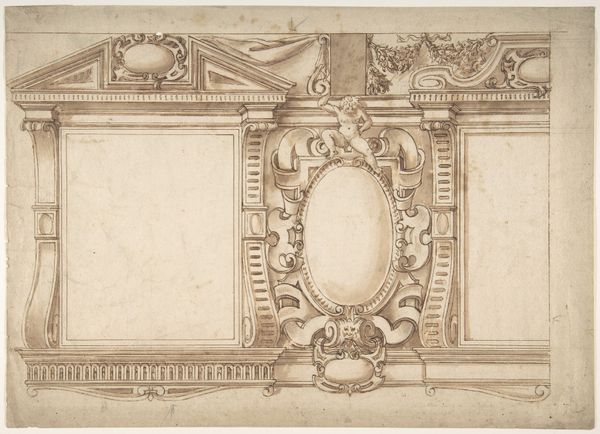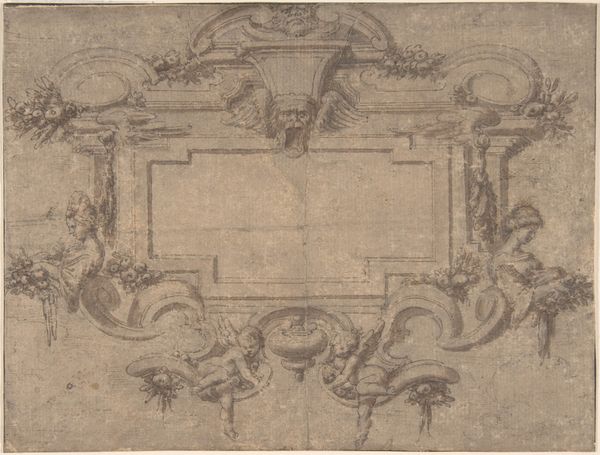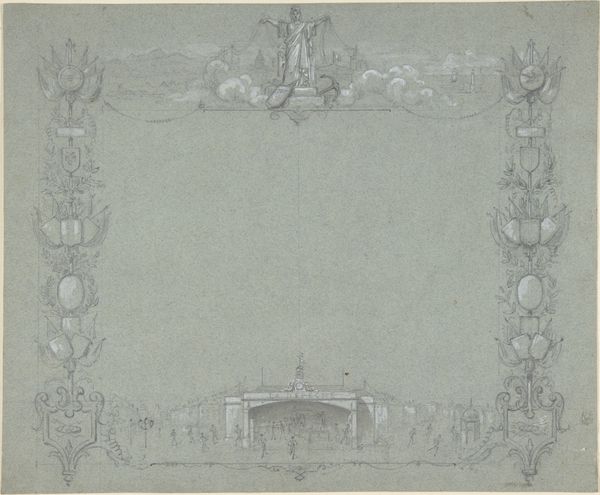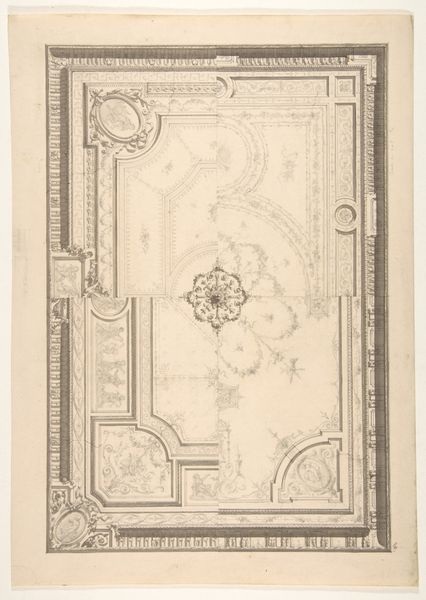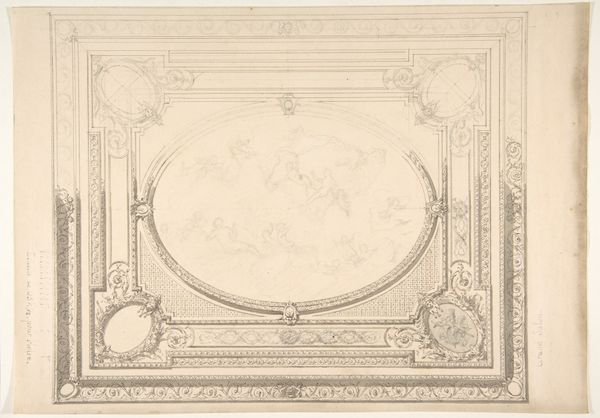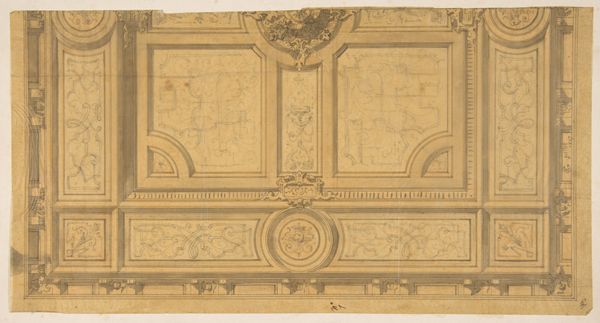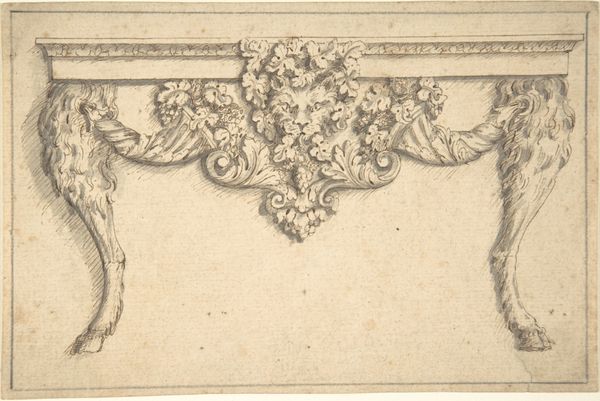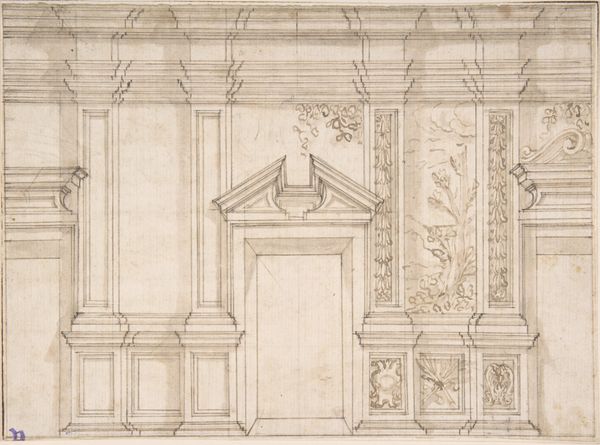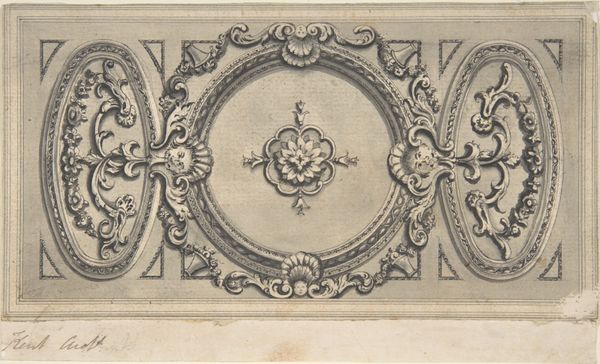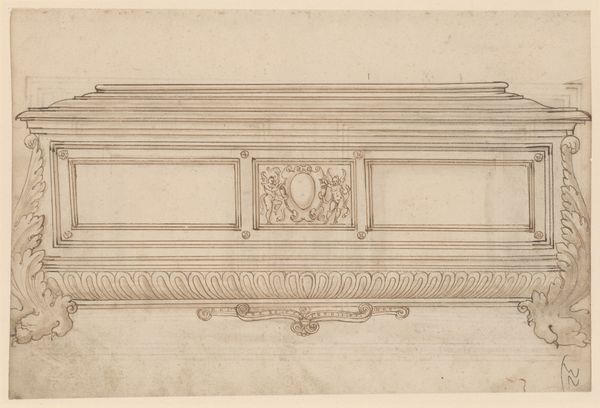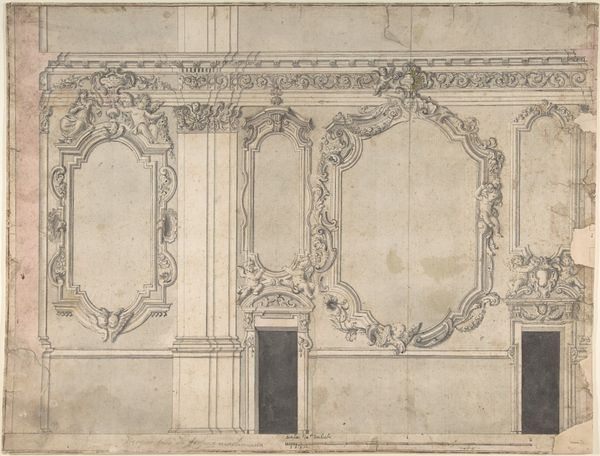
Design for Grand Salon Ceiling, Hôtel Hope 1867
0:00
0:00
Dimensions: 14 3/4 x 10 3/8 in. (37.5 x 26.4 cm)
Copyright: Public Domain
Curator: This is Jules-Edmond-Charles Lachaise’s design, from 1867, for the Grand Salon ceiling in the Hôtel Hope. It's currently held at the Metropolitan Museum of Art. What strikes you most about it? Editor: It feels incredibly precise and, in a way, quite sterile. The pale pencil lines and the geometric shapes evoke a sense of detached grandeur rather than inviting warmth. Curator: Indeed. This piece very much reflects the Neoclassical movement. If we look at the social and political context, this emphasis on order and rationality emerged in response to the perceived excesses of the Rococo period. It mirrored the values of the Enlightenment and the rising bourgeois class seeking to establish its dominance through visual displays of restraint and reason. Editor: So, the Hôtel Hope, through commissions like this, aimed to perform respectability, even austerity. Was that particularly aimed at maintaining their power, signaling taste to other elite members of society? Curator: Precisely. The "Hôtel Hope" itself, a prominent residence in Paris, became a stage for projecting a very specific image, the architectural and decorative choices contributing to a larger narrative of wealth, power, and cultural sophistication that shaped social perception. Also consider that architecture and design, accessible only to a small elite, excluded and visually repressed the working classes, too. Editor: You’re right. Seeing the drawing through that lens definitely shifts my perspective. What appeared as simply an aesthetic choice now screams a statement about class and control. This isn’t just a design for a ceiling; it’s an assertion of social order etched in pencil on paper. Curator: Absolutely. Even the choice of rendering this in precise lines using pencil on paper underscores the formality. Editor: Thanks, this has offered new insight into how the aesthetic choices are inextricably linked to broader issues of social power and control. Curator: And for me, reflecting on your fresh impressions keeps me aware of the need to ground all historical discussion in the emotional realities produced by these cultural artifacts.
Comments
No comments
Be the first to comment and join the conversation on the ultimate creative platform.

